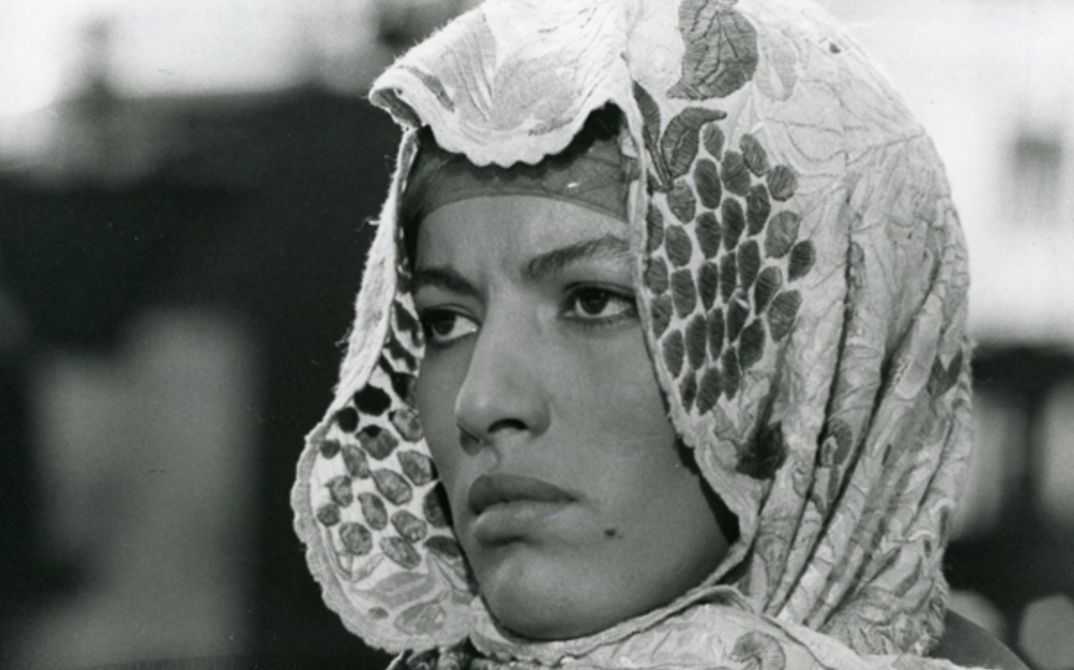In cinema, the Cold War is often presented in the context of espionage and other such operations. As part of the event series “From Cairo to Karl-Marx-Stadt: Studying During the Cold War” by the Orient-Institut Beirut, Arsenal is showing a program of films made by directors from different countries in North Africa who studied in the “Eastern Bloc” and address personal and social conditions with respect to the resultant clash of ideologies. The relationships between the Global South and the two Cold War power blocks were also marked by non-alignment, anti- and post-colonialism, wars of liberation, and individual interpretations of socialism and communism – themes that are often not given the attention they deserve in the context of the Cold War.
AHDATH SANAWAT AL-DJAMR (Chronicle of the Years of Embers, Mohammed Lakhdar-Hamina, Algeria 1975, 11.10., with an introduction by Birgit Schäbler) At the end of the 50s, Mohammed Lakhdar-Hamina studied at Film and TV School of Academy of Performing Arts (FAMU) in Prague for one year – at the behest of the national liberation front FLN, who were fighting for Algeria’s independence from France. With AHDATH SANAWAT AL-DJAMR, he created a central work of Algerian cinema in 1975. Impoverished farmer Ahmed leaves his village in order to look for a better life in the city. He gets to know the mad visionary Milhoud, fights in the Second World War, and is confronted with misery and colonial injustice. This epic of tremendous visual power draws a line between 1939 and 1954 and uses selected historical events to demonstrate that the beginning of the Algerian War in 1954 was the culmination of a long battle for independence that started with the French landing in 1830.
A short film program on 12.10. brings together works that members of the Sudanese Film Group, which was founded in 1989, produced abroad during their professional training. JAGDPARTIE (Hunting Party, East Germany 1964) was Ibrahim Shaddad’s graduation film at the German Academy for Film Art Potsdam-Babelsberg and is a treatise on racism. Shot in a forest in Brandenburg, it gives the account of the hunt for a black man in the style of a Western. Suliman Elnour studied at the Gerasimov Institute of Cinematography in Moscow (WGIK). AFRIKA, DŽUNGLI, BARABAN I REVOLJUCIJA (Africa, The Jungle, Drums and Revolution, UdSSR 1977) is dedicated to ideas of Africa in Soviet society based on archive material, children’s’ drawings, and interviews with passersby on the streets of Moscow. His graduation film WA LAKIN ALARDH TADUR (It Still Rotates, USSR 1978) led him to the People’s Democratic Republic of Yemen, where he portrayed everyday life in a school in the desert. The fundamental significance of education in building the new state following the British colonial rule collides with the roles traditionally apportioned to Bedouin girls.
AL NIL WAL HAYA (Once Upon a Time … The Nile, Youssef Chahine, Egypt/USSR 1969, 12.10., with an introduction in English by Ala al-Hamarneh) In the early 60s, Egyptian president Nasser Youssef asked Chahine to return from his temporary exile in Lebanon to the newly founded United Arabic Republic (UAR). He was commissioned to make the first co-production between the UAR and the USSR: a 70mm feature in color about the construction of the Aswan Dam. The first version of this large-scale project completed by Chahine in 1968 was rejected by both countries, and the film was only finally able to be released in 1972 after considerable changes. Chahine released the original version later, albeit on 35mm. “Conceived to glorify Egyptian-Soviet cooperation, whose symbol is the Aswan Dam, the film shifted under Chahine’s influence into a hymn about people, friendship, sincerity.” (Magda Wassef) (bik)
An event in collaboration with the Orient-Institut Beirut. Funded by the Federal Ministry for Education and Research.



